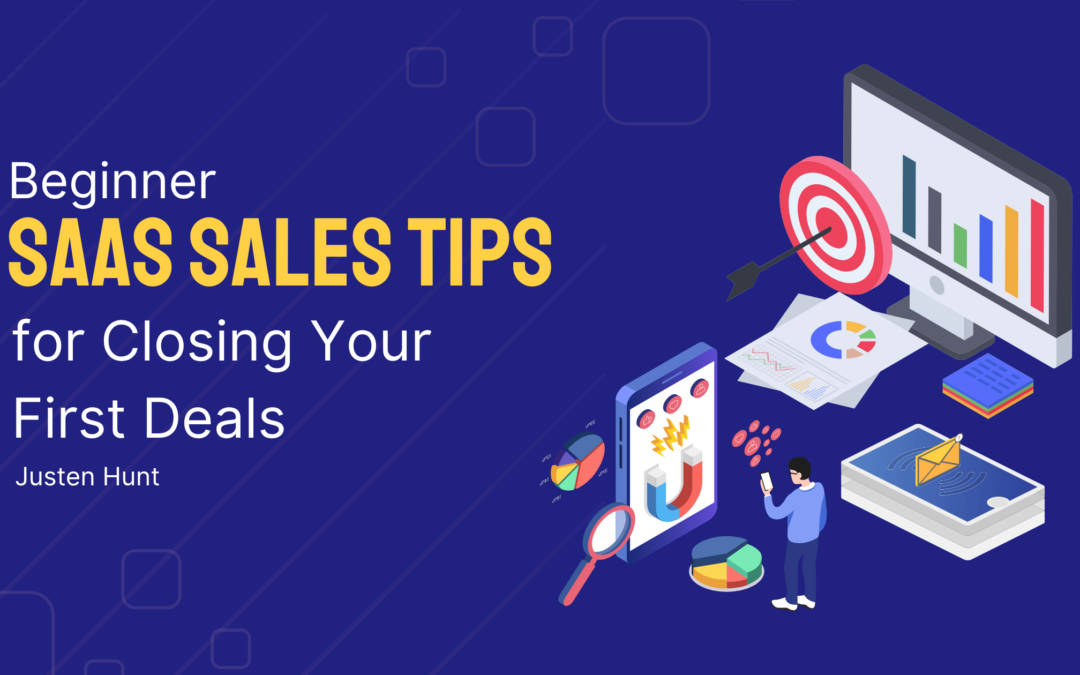Entering the world of SaaS (Software as a Service) sales can feel overwhelming. You’re selling an intangible product that often requires a long-term commitment and can come with technical complexities. But the good news? SaaS sales are highly rewarding once you understand the fundamentals.
Whether you’re a new sales rep or a founder doing sales for the first time, these beginner SaaS sales tips will help you get started on the right foot.
1. Understand the Product Inside and Out
Before you can sell a SaaS product effectively, you need to fully understand what it does, how it works, and why it matters. Take the time to use the product yourself. Get comfortable with its features, benefits, and limitations. You should be able to clearly explain:
- The problem it solves
- How it’s different from competitors
- The value it delivers to different user roles (e.g., marketing manager vs. IT director)
If your product has a free trial or demo version, go through the process just like a user would. Your ability to relate to the customer experience will greatly improve your credibility.
2. Know Your Ideal Customer Profile (ICP)
In SaaS, it’s crucial to sell to the right customers. A poor fit can lead to churn (cancellation) later, which hurts revenue. Identify your Ideal Customer Profile – these are the types of businesses and decision-makers most likely to benefit from your software.
Key ICP elements might include:
- Industry
- Company size
- Location
- Job title of decision-makers
- Tech stack already in use
Focus your prospecting efforts on leads that closely match this profile. Quality always beats quantity in SaaS sales.
3. Lead with Value, Not Features
It’s tempting to rattle off every cool feature your software offers – but don’t. Beginners often make this mistake. Customers care less about features and more about outcomes. Lead with value by answering the question: What does this software help the customer achieve?
Instead of saying, “We offer real-time analytics dashboards,” say, “Our tool gives your marketing team real-time visibility into campaign performance, so they can make data-driven decisions faster.”
Translate features into business benefits.
4. Master Discovery Conversations
The discovery phase is where great SaaS sales are won. Instead of jumping into a pitch, start by asking questions that uncover the customer’s needs, pain points, and goals. This builds rapport and shows that you’re more interested in helping than selling.
Some powerful discovery questions:
- “What’s your biggest challenge in [area your product solves] right now?”
- “How are you currently solving this problem?”
- “What would success look like for you in the next 6–12 months?”
Use their answers to shape how you position your product.
5. Personalize Your Outreach
Generic cold emails and LinkedIn messages rarely work anymore. Personalization gets attention. If you’re reaching out to a potential customer, show that you’ve done your homework.
Mention a recent company initiative, a shared connection, or a problem they may be facing. A message like:
“Hi Sarah, I saw that your team at [Company] is expanding into e-commerce. I work with other retail brands helping them optimize their product listings automatically – happy to share insights if helpful.”
This shows relevance and builds trust faster than a templated sales pitch.
6. Follow Up Without Being Annoying
Most SaaS deals don’t close on the first touch. Follow-up is essential, but it must add value. Instead of repeating “just checking in,” send a follow-up that includes something useful:
- A case study
- A relevant blog post
- A tip related to their pain point
- A reminder of their goals from your last conversation
A well-timed, value-based follow-up shows you’re committed to solving their problem – not just closing a deal.
7. Use Social Proof and Case Studies
In B2B SaaS, buyers want to know they’re not alone. They want proof that others like them have succeeded with your product. Share relevant case studies, testimonials, and logos of well-known customers if possible.
If your software helped another company increase productivity by 30%, let prospects know. Social proof reduces perceived risk and builds confidence.
8. Embrace a Consultative Mindset
Think of yourself as a problem-solver, not a product pusher. When you approach sales as a consultation, you’re more likely to earn trust and close deals. Ask yourself:
- “Am I helping this customer make the best decision – even if it’s not us?”
- “Am I listening more than I’m speaking?”
- “Am I offering real insights, not just a sales pitch?”
People buy from those they trust. Being honest and helpful builds long-term relationships and reduces churn.
9. Track Metrics and Learn from Every Call
Even as a beginner, you should start measuring your performance. Basic metrics to track include:
- Number of calls or emails made
- Response rates
- Demos booked
- Conversion rates from demo to close
- Churn rate after onboarding
Analyzing this data will help you refine your approach over time. Don’t get discouraged by “no”s – they’re part of the process. Learn from every interaction.
Final Thoughts
SaaS sales is a mix of science and art. It requires product knowledge, empathy, resilience, and constant learning. By focusing on customer needs, delivering value, and building trust, you’ll lay a strong foundation for success – even if you’re just starting out.
Stick with these beginner tips, and you’ll be well on your way to closing your first deals and growing your SaaS career.
